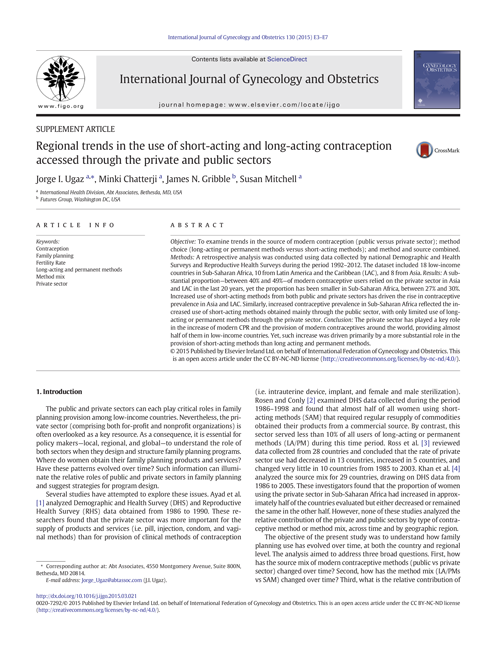
Resource Library
Regional Trends in the Use of Short-acting and Long-acting Contraception Accessed through the Private and Public Sectors
To examine trends in the source of modern contraception (public versus private sector); method choice (long-acting or permanent methods versus short-acting methods); and method and source combined, a retrospective analysis was conducted using data collected by national Demographic and Health Surveys and Reproductive Health Surveys during the period 1992–2012. The data-set included 18 low-income countries in Sub-Saharan Africa, 10 from Latin America and the Caribbean (LAC), and 8 from Asia. A substantial proportion—between 40% and 49%—of modern contraceptive users relied on the private sector in Asia and LAC in the last 20 years, yet the proportion has been smaller in Sub-Saharan Africa, between 27% and 30%. Increased use of short-acting methods from both public and private sectors has driven the rise in contraceptive prevalence in Asia and LAC. Similarly, increased contraceptive prevalence in Sub-Saharan Africa reflected the increased use of short-acting methods obtained mainly through the public sector, with only limited use of long-acting or permanent methods through the private sector. The private sector has played a key role in the increase of modern CPR and the provision of modern contraceptives around the world, providing almost half of them in low-income countries. Yet, such increase was driven primarily by a more substantial role in the provision of short-acting methods than long acting and permanent methods. This article was published in the International Journal of Gynecology and Obstetrics in August 2015.
Resource Type :
Country :
Year : 2015-08-01T00:00:00
Language : English
Project : SHOPS


